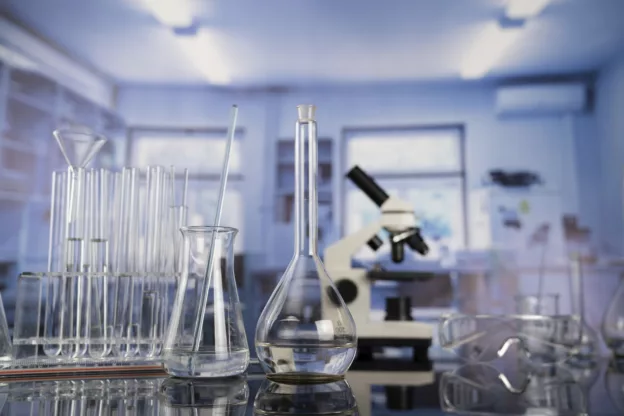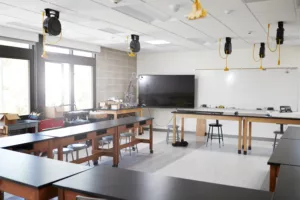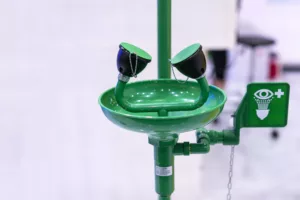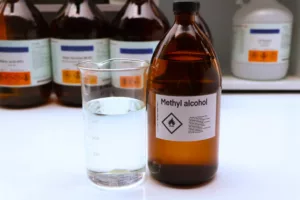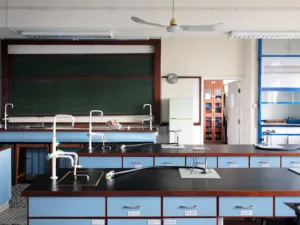NSTA recommends a strong science program for high school students that requires competent, dedicated, and qualified science educators who are trained to meet the needs of young adult learners.
Quality 21st-century science education is vital for the future of our students, country, and world. Science develops the critical-thinking skills that are necessary for everyday life. High school science classes enable our nation’s students to develop the critical-thinking skills required to make informed decisions about public policy, evaluate claims made in the media, talk to their doctors, and manage daily lives that increasingly rely on technology. Many students are preparing for a future in a STEM career, and all learners are preparing for a world in which they will need to analyze and make informed decisions daily.
Science educators strive to provide safe and effective learning for students in grades 9–12, but face many challenges, including changing national and state standards and district limitations in funding and resources. In addition, high school science educators need appropriate working conditions, such as adequate facilities and equipment, training, and the support of stakeholders, including parents, community leaders, and business leaders. Furthermore, high school students deserve qualified, dedicated teachers to meet global, scientific, and technological challenges.
Declarations
The National Science Teaching Association recommends high school science teachers
• be fully qualified to teach their assigned science discipline in their state;
• have adequate training in science content, safety, effective instructional practices, and three-dimensional learning;
• seek continuous professional learning for educating high school students through content, pedagogy, and technology, and be able to use these skills effectively in the classroom;
• embrace three-dimensional teaching and learning as described in A Framework for K–12 Science Education and applied in the Next Generation Science Standards (NGSS; NSTA 2016, NSTA 2018);
• welcome and support all learners through modeling a multidisciplinary approach;
• model and support science literacy in understanding the world and its challenges;
• create and use a safe environment for students to engage in science and engineering practices in the classroom, laboratory, and informal settings; and
• recognize the current professional practices and adhere to safety standards to avoid and reduce injury in the classroom, laboratory, and out-of-class learning environments (NSTA 2015).
NSTA recommends that the high school science curriculum
• align with the disciplinary core ideas, crosscutting concepts, and science and engineering practices as outlined in A Framework for K–12 Science Education (NSTA 2018);
• promote opportunities to engage in science and engineering practices that are connected to the natural world;
• engage all students in investigation and design (National Academies of Sciences, Engineering, and Medicine 2019);
• promote the development of science literacy and a scientific mindset about the nature of science (NSTA 2000);
• employ the integration of science with other curriculum areas and engineering with a multidisciplinary approach that incorporates group skills;
• encourage the development of critical-thinking and communication skills through peer review and larger presentations;
• apply content skills learned in science classes to explain phenomena, create models, and design solutions to real-world problems;
• provide opportunities for critical-thinking and decision-making activities for community-based problems;
• connect the science classroom to the community through real-life experiences, careers, and place-based learning that includes field trips, speakers, partnerships, and informal science programs;
• promote scientific, engineering, and technological literacy;
• assess student learning with a variety of formative and summative methods to inform instructional decisions;
• align with three-dimensional philosophy;
• and allow for student differentiation, modification, and remediation; and ensure that students’ gender identity, culture, and exceptionalities are supported to meet the NGSS goal of “Science for All.”
NSTA recommends that administrators
• limit class size to 24 in all high school science classes for safety, adequate work space, and effective teaching and student attention (NSTA 2015);
• assign master science teachers as mentors for novice teachers;
• provide adequate resources and time for professional development;
• provide time for preparations necessary for safe and effective science teaching with minimal teaching assignments;
• schedule science teachers in only one classroom to manage the laboratory safely and effectively and ensure these areas are used only for science classes and activities;
• provide classrooms that have the funding, facilities, and space for a safe, laboratory-oriented program that employs three-dimensional learning;
• provide the latest technology and audiovisual equipment in the laboratory and classroom;
• supply computers and electronic devices with internet access for research, collection, analysis, and presentation of data, with necessary software and maintenance;
• fund adequate supplies and expendables for laboratory experiences;
• provide support equipment, such as photocopying machines, scanners, and a telephone, in a nearby and accessible area;
• supply a textbook or an e-textbook for each student, laboratory guides, and references as appropriate and needed; and
• provide support and resources to adequately and safely meet the needs of students with exceptionalities.
—Adopted by the NSTA Board of Directors, July 1986
Revised February 2002
Updated October 2019
Adopted by the NSTA Board of Directors, March 2020
References
Kochhar, C. A., and L.L. West. 1996. Handbook for successful inclusion. Gaithersburg, MD: Aspen Publishers.
National Research Council (NRC). 1996. National science education standards. Professional Development Standard A, Teaching Standard D, Program Standard D, Program Standard F, and System Standard D. Washington, DC: National Academy Press.
New Jersey Department of Education. 2000. Planning is key to success in Howell Township.Inclusion Insights. (spring). Trenton, NJ: New Jersey Department of Education.
U.S. Department of Education (U.S. DoE). 2000. Before it–s too late: A report to the nation from the National Commission on Mathematics and Science Teaching for the 21st century, GOAL 3: Improve the working environment and make the teaching profession more attractive for K-12 mathematics and science teachers. Washington, DC: U.S. DoE
Source: NSTA





